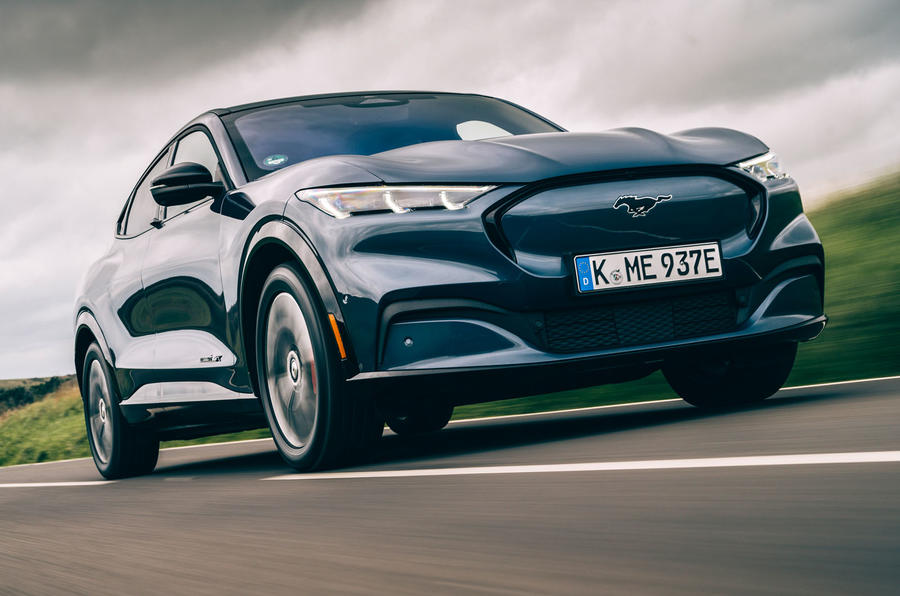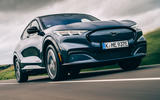What is it?
Ford has electrified a new Ford Mustang; sort of. Note the use of the indefinite article there, folks, because we’ll come back to it.
The new Ford Mustang Mach-E is a high-rise, four-door crossoverish hatchback not unlike a Polestar 2, and it comes with a choice of either one motor or two; a bigger drive battery or a slightly smaller, lighter one; and with up to 379 miles of WLTP-certified range (which, not-so-coincidentally, is as much as any current Tesla will give you, and more than you’ll get from any electric Polestar, Jaguar, Mercedes or Audi).
It’s an impressive debutant EV for plenty of reasons, but perhaps not quite as impressive as the strategic design and positioning behind it - which, if it works, could be a masterstroke. The designation of an electric car as a Ford Mustang will be anathema to some, and it puts a weight of expectation on this car’s driving experience which those same critics will inevitably claim it can’t possibly get out from underneath of. But I don’t think it does too badly with it; that, or the physical weight it carries, actually.
But the thing is, this is very much ‘a’ new Mustang; it’s not ‘the’ new Mustang (imagine the reaction if Dearborn had simply swapped a 5.0-litre V8 for a couple of electric motors). It’s not the killer of Ford's V8 pony car icon that so many might fear, but rather the perfect modern sidekick for it come along not as a threat (at least, not for now) but rather to extend the old-timer's life for as long as it might.
Like plenty of other big car-makers, Ford’s current ‘big job’ is to cut the average carbon emissions of the new cars that it sells in order to avoid big fines. This is not news - and it’s partly why there’s been such an all-round rush to introduce electric cars this year, which is the first for which financial penalties are being imposed. Selling so many V8-powered Mustangs in Europe - and they’ve been doing rather more of them than they ever expected to, by the way - isn’t currently helping achieve that ‘big job’.
An EV will help to achieve it, though; and the Blue Oval has been working on its first proper EV since 2014. It could have been something smaller and more affordable than the Mach-E, left to sit in a new and zanily decorated corner of the showroom and quietly do its own thing; and, but for some bright spark, I suspect it would have been. That’s precisely the way plenty of Ford’s European-based competitors have set about the problem.
But a couple of years ago, a voice in the Ford design department said something along the lines of “hold on: why don’t we stick it right in the middle of the showroom instead? Why not design it like a Mustang, sell it like a Mustang, stick our chests out and be proud of it?”
Why not indeed. Because a cheaper EV like a Nissan Leaf or VW ID 3 might have sold in greater numbers in Europe, but Ford needed a global EV to do the business in North America and elsewhere too. It needed a bigger and more usable car with a longer range; and because making it like that would also make it expensive, it also needed a global pseudo-premium brand to sell it under.
An electric Lincoln would have meant nothing to people in Europe. An electric Mustang, on the other hand, makes a brilliantly inclusive implicit statement to Ford’s most enthusiastic, evangelistic and big-spending customers. “Electric cars aren’t for other people,” it says, “they’re for you, too. This is your kind of car. Buy a Mach-E and you can be part of the solution to our emissions problem. And if you do, when you want to replace your Mustang V8 in two, or three, or five years time, there’s a much better chance that we’ll be able to sell you one.” Mustang owners are being given a buy-in here; albeit tacitly, they’re being trusted to ‘get it’. If they can, surely everyone can?




















































Join the debate
Add your comment
This looks to be a pretty credible effort by Ford. The entry level model is good value for range and space. It might be a tougher job for the higher price models where the interior quality probably won’t measure up to that of the German manufacturers. I am not a fan of the minimalist dash of the Tesla Model 3 and the Model Y and the build quality of all Tesla’s can be variable.
Wow. Ford knocks it out of the park, yet again. Makes the Tesla and VW offerings look like the shit that they are.
This doesn't look like a £57k car. It looks like a Focus level of quality inside and that isn't even really very good in that class. I almost think I'd prefer an ID3 than this and they cost £30k.